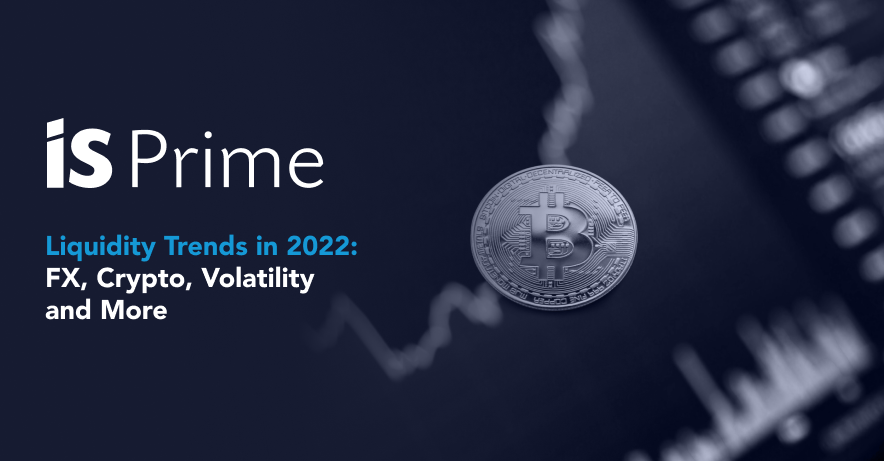Liquidity Trends in 2022: FX, Crypto, Volatility and More

Liquidity is a crucial requirement for any broker, let it be dealing in stocks, forex or cryptocurrencies. It ensures how easily an asset can be bought and sold on the trading platform.
Because of this requirement, a new industry emerged within the trading space. These are liquidity providers , often also called market makers. These companies ensure that there is enough liquidity available for an asset even though the organic demand for that is dull. The platforms make money from the bid-ask spread.
However, the liquidity space has changed drastically with the introduction of electronic trading. The space has witnessed further changes in recent years when penetration of mobile phones and internet connections helped the retail trading industry explode.
“The liquidity space has changed significantly,” Lars Holst, the Founder and CEO of GCEX, told Finance Magnates.
“For younger people, crypto trading is far more attractive than trading equities,” Holst added.
Even within the crypto industry, demand for trading with non-fungible tokens (NFTs) is growing fast. These instruments are nothing like traditional assets, but they are breeding with a “new generation of traders.” Meanwhile, GCEX, which is known for offering forex and crypto liquidity, is aggressively expanding its list of digital asset offerings.
“We have seen a lot of volatility in the crypto market recently, just as we have seen with other asset classes,” said Holst. But, he believes that crypto traders still need more education.
FX Is Still the King
“Over the past 10 years of managing liquidity and flow, I’ve seen a massive shift from ‘relationship only’ liquidity to a very statistical approach on how flow is priced,” said Barry Flanigan, the Head of Electronic Trading Solutions at IS Prime, which is part of the ISAM Capital Markets Group.
“That doesn’t mean relationships aren’t important.”
Additionally, he pointed out that proper pricing of the instruments is crucial nowadays. Spreads are becoming more sensitive to abusive market behavior.
“These days LPs are far more sophisticated, and working with them to optimize our pricing, interacting with our technology, and managing client flow requires dedicated and skilled resources,” Flanigan added.
Current Trends
The liquidity market has changed, but there will always be some developing trends around the market. First the pandemic and then the breakout of the Russia-Ukraine war heavily impacted the trading liquidity space, mostly with the rising volatility.
“During the Pandemic, you could argue that any volatility was ‘good volatility’ and, therefore, spreads reduced significantly. That landscape is a bit more tricky to navigate in 2022, and we’ve seen a relaxation in underlying interbank spreads as market conditions have become choppy,” Flanigan said.
Holst added: “With the volatility… I think brokers are re-thinking their business models, depending on how much risk they were taking. Given the economic climate, people will prioritize having safe, credible counterparties. There will also be a significant reduction in the number of market makers.”
In addition, he pointed out that now there are many market makers for the size of the market, and the ones with a small balance sheet who cannot offer a full-scale service will struggle to survive. However, GCEX looks to be doing very well as it generated a total turnover of £1.89 million along with an operating profit of £1.42 million in 2021.
Moreover, Flanigan thinks that the liquidity composition of true market makers has remained relatively static for at least the past three years. “There is… the ongoing need to find new ways to improve pricing and execution, but this is from the same major players in the industry,” he said.
Furthermore, he added that the key ongoing liquidity industry trend “is the ability to take bank skews, but not directly distribute them.”
“Bank skews are highly costly when leaked to the market, and can be detrimental to their business model and ability to price clients aggregated environments aggressively. On the other side, receiving these skews is enormously valuable and is a significant differentiator for us.”
Integrity and Consistency
Trends in the market change with time and conditions, but two things market makers should always adhere to are integrity and consistency. The priority of the companies should be to maintain quality with the growing demand.
“Under-pricing risk and allowing flow and bad behavior would tarnish not only [the] brand, but inevitably the entire industry,” Flanigan said.
Furthermore, Holst added: “With the latest move in the market, some players simply pulled the price. This isn’t acceptable. You need liquidity to be available when volatility increases. A market maker who suddenly vanishes when the market moves are worthless in the long-term.”
Overall, the liquidity space has changed drastically over the years with more changes no doubt ahead on the horizon. The rising demand for crypto, the boom in retail trading, and wild volatility in the markets are only some of the key influencing factors the market has to respond to now. However, the core structure of the market remains the same and the industry is prepared and technology advanced enough to react to whatever challenges lie ahead.
For more information about IS Prime, please contact us.





